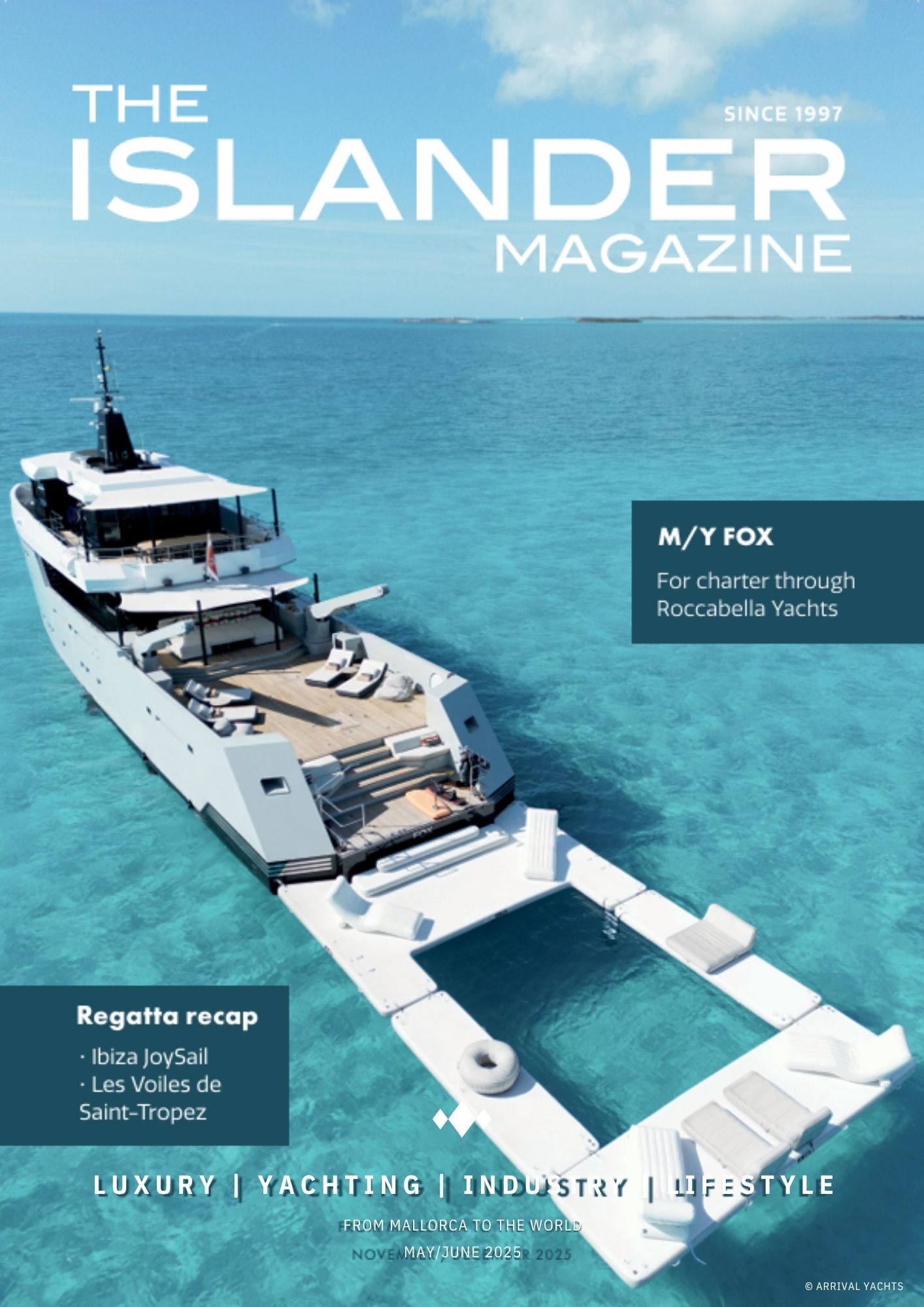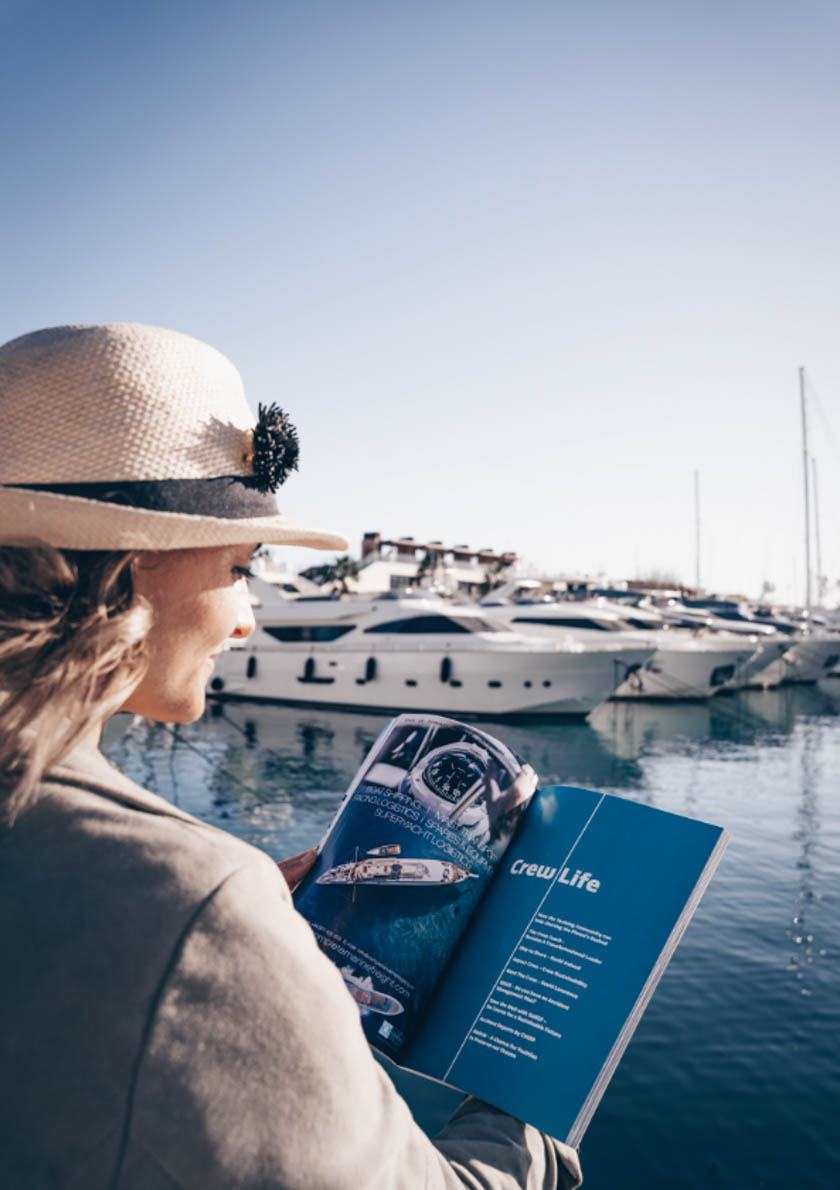With inconsistent reporting and different definitions of incidents, it’s difficult to pinpoint the number of yacht fires that have occurred in the last decade. Ageing yachts and more lithium-ion (Li-ion) batteries onboard may be part of the problem. The Islander looks at some key risks and shares advice on how to reduce them.
What are lithium-ion batteries?
Li-ion batteries can store a lot of energy in a small space, making them common aboard yachts to power toys like e-bikes, e-Foils, and Seabobs. But if they overheat or get damaged, they can catch fire, explode, or release explosive and toxic gases. These fires spread fast and are harder to put out than other types of fires.
When M/Y Siempre caught fire, the flames spread fast—reaching 2.5 metres in seconds—forcing the crew to jump overboard. According to Malta’s Marine Safety Investigation Unit (MSIU), the fire was most likely started by a faulty Li-ion battery for the owner’s water scooter, or a fault in its power socket. Crew had previously fixed scorching in the socket, so they were aware of the problems for both.
Crew knowledge: vital safety awareness
Specialised crew training is essential to understand Li-ion battery care, hazard identification, fire prevention, emergency response, and safe handling. Even though rules like the ISM Code, MGN681 guidance, and STCW Convention exist, there’s still a big gap in crew training.
James Cunningham from LiVault in Mallorca says the complexities of thermal runaway are often not fully understood. Thermal Runaway does not necessarily mean fighting a fire; there are other hazards to consider.
Vapour cloud explosion: runaway gases may not necessarily ignite immediately, and there may be no fire at all. Instead, they may create a highly flammable and explosive vapour cloud.
Highly toxic gases: burning li-ion batteries produces gases like hydrogen fluoride, which can cause severe burns, respiratory damage or death.
Explosions and projectiles: batteries can explode with no warning, ejecting burning cells at high speed, spreading fire, and causing injuries.
Deep-seated flames: fires can start deep within the battery core or device, making them difficult to fight.
Crew should routinely check batteries for swelling, heat, leaks, or damage. After a fire on M/Y Kanga, a Flag State report found that crew didn’t fully grasp the risks, even after discovering leaks in three of four batteries. The fire spread in under 25 minutes and included explosions; it was reported that it was likely caused by Li-ion batteries from an electric surfboard.
Proper storage & charging for li-ion batteries
The issue of Li-ion batteries is not limited to superyachts; smaller yachts under 24 meters that have Seabobs, e-bikes, and other toys are also at risk. Toys and electrical equipment are frequently exposed to harsh temperatures, humidity, and salt water, and many yacht designs lack space for electrical gear or safe charging and storage areas.
A big problem is that there’s no agreed standard for battery storage and charging containers. Cunningham points out that although Lloyd’s Joint Hull Committee and the MCA (MGN681) have released guidelines, the combined guidance does not provide crew with a clear path forward or a means of evaluating the safety of available products. “Furthermore, there is a real issue with unscrupulous suppliers pushing safety products that cannot function as claimed while offering false or misleading certifications. This is only possible due to the lack of an agreed testing protocol or standard. Safe fire load, or how many batteries may be placed in a container safely and to what capacity, is an important consideration that the industry frequently seems to overlook. Crew need to be very careful about storing and charging more than one battery in a box despite what container manufacturers claim, unless the container has been independently tested and certified specifically to do so.”
LiVault stresses the need for certified test procedures in raising industry safety standards. ”The M02/22 test by DMT TUV NORD verifies a container´s ability to contain explosions, fires, and gas up to a maximum kWh battery capacity.”
Tips for safe storage and charging:
- Use electrical components and Li-ion batteries made specifically for marine usage, and make sure you always use the charger that is meant for the specific battery you are using.
- Don’t overcharge and always charge in a dry, well-ventilated space away from flammable items.
- Use certified containers with monitoring and built-in fire suppression systems. Never leave batteries charging unattended.
- Create and implement a Standard Operating Procedure (SOP) for charging and storing batteries that has been approved by fire safety consultants and surveyors with expertise in Li-ion storage. In addition, LiVault emphasises that, ”Throwing a burning battery overboard should never be part of a Standard Operating Procedure.”
Insurance and liability: are you covered?
The rise in Li-ion use on yachts raises insurance implications. Poor storage and charging could lead to liability in case of a fire or accident, making safety, clear insurance terms, and training critical.
Paul Miller, Technical Underwriting Director at Millstream Underwriting Limited, part of Kentro Capital Group, explains “Policy conditions or Warranties ensure the Regulations are adhered to and we have regular discussion with the MCA, Flag States and others. Large yachts (>500 tons) with hybrid propulsion systems and large battery banks are generally classified and installation approved by Class. Insurers were particularly concerned about the rise in electric toys and tenders that are frequently added to yachts post-build and the absence of any regulation or crew training about storage, charging, use, and firefighting prompted us to create the new Lithium-Ion Battery Clause.”
To mitigate risks, insurers have introduced Risk Management Surveys, which are completed by experts and provide reassurance that the vessel they are insuring is operating to the highest standards. “We view these as a tool to help the Owner or Captain run a more efficient and safe vessel,” Miller adds. “There are now 16 sections in the survey, including one on Li-ion procedures for training, charging, storage, and firefighting. For instance, we often find vessels do not carry a specific Li-ion fire extinguisher.”
Since accident reports aren’t always made public, it’s hard to determine the cause of all yacht fires. But every incident is a reminder that safety must always come first, regardless of pressures from owners or guests.
Safety is non-negotiable
Safety isn’t just about equipment; it’s about training, awareness, and preparation. By investing in crew education, proper charging and storage, and the right insurance, yacht owners can reduce risks and safeguard both people and property.

























0 Comments